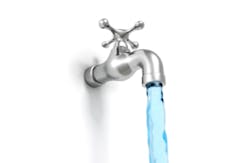WQA urges member organizations to seek legal counsel for new lead requirements
LISLE, Ill. — With the three-year transition period for the Reduction of Lead in Drinking Water Act ending on Jan. 4, 2014, the Water Quality Association (WQA) is urging its member companies to seek legal counsel for all compliance-related questions not explicitly addressed in the information provided by the U.S. Environmental Protection Agency (EPA).
Any devices installed prior to Jan. 4 are granted “grandfather” status, noted the release.
The Act defines a product as “lead-free” if it contains lead levels no higher than 0.25 percent; according to the release, for each wetted component, the percentage of the lead in the component is multiplied by the ratio of the wetted surface area of that component to the total wetted surface area of the entire product to calculate the average lead content.
To review the US EPA’s summary and FAQs in full, please visit http://water.epa.gov/drink/info/lead/upload/epa815s13001.pdf.
The EPA is also offering an informational handout to help companies identify products that are certified as lead-free.
